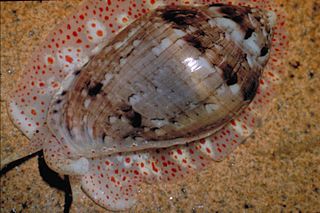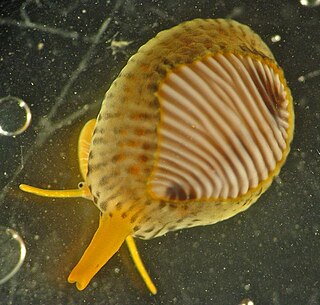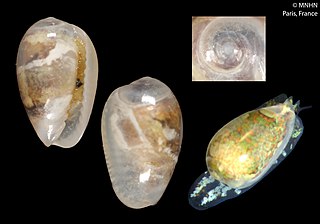
Marine biology is the scientific study of the biology of marine life, organisms that inhabit the sea. Given that in biology many phyla, families and genera have some species that live in the sea and others that live on land, marine biology classifies species based on the environment rather than on taxonomy.

The Philippine Sea is a marginal sea of the Western Pacific Ocean east of the Philippine Archipelago and the largest sea in the world, occupying an estimated surface area of 5 million square kilometers. The Philippine Sea Plate forms the floor of the sea. Its western border is the first island chain to the west, comprising the Ryukyu Islands in the northwest and Taiwan in the west. Its southwestern border comprises the Philippine islands of Luzon, Catanduanes, Samar, Leyte, and Mindanao. Its northern border comprises the Japanese islands of Honshu, Shikoku and Kyūshū. Its eastern border is the second island chain to the east, comprising the Bonin Islands and Iwo Jima in the northeast, the Mariana Islands in the due east, and Halmahera, Palau, Yap and Ulithi in the southeast. Its southern border is Indonesia's Morotai Island.

Isopoda is an order of crustaceans. Members of this group are called Isopods and include both terrestrial and aquatic species such as woodlice. All have rigid, segmented exoskeletons, two pairs of antennae, seven pairs of jointed limbs on the thorax, and five pairs of branching appendages on the abdomen that are used in respiration. Females brood their young in a pouch under their thorax.

Marginella is a very large genus of small tropical and temperate sea snails, marine gastropod molluscs in the subfamily Marginellinae of the family Marginellidae, the margin snails. It is a type of genus family.

Trivia monacha, also known as the European cowrie or spotted cowrie, is a species of small sea snail, a marine gastropod mollusc in the family Triviidae, the trivias.

Cystiscidae is a taxonomic family of minute sea snails, marine gastropod mollusks or micromollusks.

Persicula is a taxonomic genus of minute to small predatory sea snails, marine gastropod mollusks. It includes several species which are micromollusks.

Cystiscinae are a taxonomic subfamily of minute sea snails. These are marine gastropod mollusks or micromollusks in the family Cystiscidae, and the clade Neogastropoda.

Persiculinae is a taxonomic subfamily of minute to small predatory sea snails, marine gastropod mollusks. This subfamily includes several species which are micromollusks.
The World Register of Marine Species (WoRMS) is a taxonomic database that aims to provide an authoritative and comprehensive list of names of marine organisms.

Trivia arctica, the northern cowrie, is a species of small sea snail, a marine gastropod mollusc in the family Triviidae, the trivias. This is a similar species to Trivia monacha and it often occurs in the same areas. The name Trivia means "common" and the word arctica means "of the arctic".

Erato is a genus of small sea snails, marine gastropod molluscs in the family Eratoidae, the trivias and allies.

Freshwater snails are gastropod mollusks that live in fresh water. There are many different families. They are found throughout the world in various habitats, ranging from ephemeral pools to the largest lakes, and from small seeps and springs to major rivers. The great majority of freshwater gastropods have a shell, with very few exceptions. Some groups of snails that live in freshwater respire using gills, whereas other groups need to reach the surface to breathe air. In addition, some are amphibious and have both gills and a lung. Most feed on algae, but many are detritivores and some are filter feeders.
Pachybathron olssoni is a species of very small sea snail, a marine gastropod mollusk or micromollusk in the family Cystiscidae.
Persicula bagne is a species of very small sea snail, a marine gastropod mollusk or micromollusk in the family Cystiscidae.

Pachybathron is a genus of very small sea snails, marine gastropod mollusk or micromollusk in the subfamily Cystiscinae of the family Cystiscidae.
Pachybathron cassidiforme is a species of sea snail, a marine gastropod mollusk, in the family Cystiscidae.

Pachybathron guadeloupense is a species of sea snail, a marine gastropod mollusk, in the family Cystiscidae.

Pachybathron kienerianum is a species of sea snail, a marine gastropod mollusk, in the family Cystiscidae.
Pachybathron tayrona is a species of sea snail, a marine gastropod mollusk, in the family Cystiscidae.












